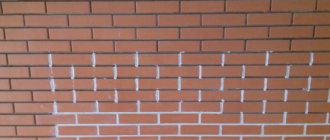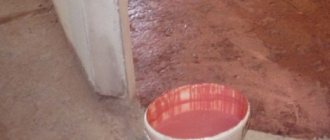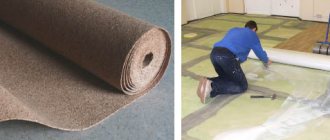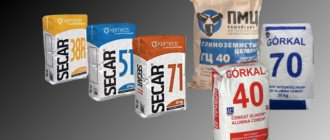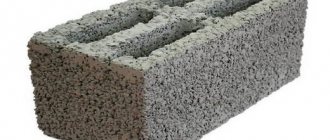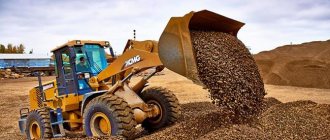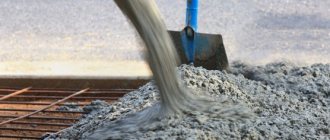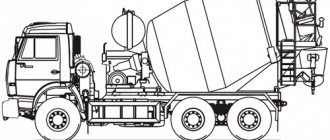A primer is a special liquid composition that is applied to various surfaces before wallpapering, plastering, painting and other finishing works. Today, there are several types of soil on the market designed for different purposes. It’s hard to believe, but a few years ago, instead of a primer, they used regular PVA glue diluted with water.
Now you can avoid this and purchase the mixture that is suitable for your purposes. But which primer should you choose? Let's find out, but first let's talk about why you need to prime the surface at all.
Firstly, subsequent layers applied to a primed base will lay more evenly. Secondly, priming will significantly save paint, and thirdly, it will level the surface. But that’s not all, because each type of primer has its own purpose.
What surfaces need to be treated?
The surface to be repaired can consist of a variety of materials: wood, gypsum or cement-sand plaster, concrete. They all have different conditions and properties, which can affect the adhesion of finishing materials to each other and the further quality of finishing service. To minimize the risk of them peeling off from each other and to best prepare the work surface, it is necessary to coat it with a primer of the appropriate material.
Consumption of other primer solutions
No less popular are products from the Knauf company. The peculiarity of this product is its affordable price with high performance characteristics . Depending on the purpose of the primer, its consumption can range from 70 to 350 grams per square meter . It is worth noting that universal primers, compared to deep penetration solutions, are consumed significantly less.
No less popular is the deep penetration prospector primer. The material is used for processing structures made of various materials. Depending on this, the penetration depth can range from 1 to 5 mm . The prospector primer has a low consumption , which is 200 grams per square meter of surface area being treated.
Purpose and properties of deep penetration compositions
Deep penetration primer is used to prepare surfaces that have various properties that can help improve the quality of the finish:
- increased water absorption of the base;
- fine surface porosity;
- a base containing sand and various mineral components;
- chalky soiling, dustiness, etc.
A deep penetration primer reduces the ability of the working surface to absorb water, improves the surface properties of loose materials, making their structure stronger.
How to make a choice?
Which deep penetration primer is best? When choosing a material for surface treatment, you should not lean towards the cheapest options. This is the case when the stingy pays twice: practice shows that the compositions of the lowest cost do not provide the necessary qualities for further work, the applied building materials do not have reliable adhesion to the base, wallpaper peels off, and plaster and other finishing coatings peel off from walls, ceilings, floors A deep penetration primer is reliable, the price of which starts at 400 rubles per 10 liters.
In addition to the price, you should pay attention to the manufacturer - products from well-known brands usually meet a high level of quality. Primers “Ceresit” and “Optimist” are in high demand among large and individual developers. These compositions have high technical characteristics, as well as an optimal price-quality ratio. To understand which deep penetration primer is better, pay attention to the description of the material, you can even find and read reviews.
Operating principle of primers
- The general purpose of primers is to penetrate into the thickness of the base, strengthen it, and improve adhesion to the finish.
- Any of the ready-made primers does not reduce the vapor permeability of surfaces. The fact is that when the composition dries, it creates a crystal lattice that has sufficient penetrating ability.
- This lattice also plays the role of a frame that holds the base particles.
- Primers can, among other things, reduce the porosity of surfaces. Thus, it is possible to strengthen the bases and save on the consumption of finishing and consumable materials.
- Almost all such compositions protect surfaces from the destructive effects of harmful microorganisms.
- If the base you are processing with your own hands has become contaminated, the soils eliminate the negative effects of such influences.
Features of deep penetrating soil
The composition penetrates deeply into the pores and cracks of the base.
Deep penetration materials are used mainly for processing concrete, plaster and other porous, non-loose substrates.
Note! The main purpose of such compositions is to saturate the base to the maximum possible depth. This effect significantly increases the adhesion of the soil, topcoat and base to each other.
- This occurs because aqueous dispersions with a very small diameter of latex particles (micelles) are used as film-forming substances in these compositions.
- Ultra-fine (up to 0.05 microns) polymer particles, penetrating deep into the material, strengthen microcracks and pores. The smaller the particles, the deeper the soil can penetrate into the base.
- In addition, when using deeply penetrating compounds, after drying, a vapor- and gas-impermeable film does not form.
- Such compositions firmly glue dust and small particles of the base. Thus, they prevent the surface from crumbling.
- Primers made in accordance with State Standards help save finishing materials. This happens due to the fact that by clogging microcracks and pores, they reduce the absorbent properties of the base.
- By priming the base with this type of composition, you will not experience problems with excessively rapid drying of finishing or consumable materials that require a certain time to set.
Use of formulations
The composition can be applied with a roller.
- The instructions recommend applying deep penetration primers using a wide brush or roller.
- The base must be strong, dry, dust-free and grease-free.
- You can work with the composition in the temperature range from +5° to +30 degrees.
- The coating dries, depending on the environmental conditions and type of base, from 30 minutes to two to three hours.
- When the primer is completely dry, you can begin finishing work.
Primer composition "Optimist"
The “Optimist” deep penetration primer is produced in Russia and is perfectly adapted to the materials used in the country, climatic conditions and other features of the surfaces being treated. It is suitable for both outdoor and indoor use. The basis of the primer composition is an acrylic polymer, which provides deep penetration into the surface and good surface adhesion properties. The composition includes antiseptic additives that prevent the development and growth of fungi, mold and other microflora.
The “Optimist” deep penetration primer is used for treating surfaces made of concrete, brick, cement-sand plaster, plasterboard, and wood. Moreover, the composition should be applied before each subsequent stage of finishing, which will ensure reliable adhesion of the materials. The applied primer layer after drying becomes transparent, colorless, evens out the absorption capacity of the surface and reduces the consumption of applied paints, water-dispersion and plaster compositions.
This product is also used to thin water-based paints.
Primer for metal
The most common and popular material today is metal primer. They choose it very carefully. To properly prepare a metal surface for painting, it is worth using a solution that does not contain acrylic . A deep-penetrating acrylic primer is unable to protect metal from corrosion, and in some cases it can even trigger the rusting process.
For priming metal structures, solutions based on resins and epoxy are used. If you properly prepare the surface, the consumption per 1 m2 will be no more than 100 grams of soil solution.
Description of the deep penetration composition of Ceresit
The Ceresit primer is also popular among builders. The products of this manufacturer are high quality, have a complex, improved composition, and are produced using German technologies.
The primer is used for all surfaces with an absorbent base: walls, floors, ceilings. Increases adhesion of the working surface, binds dust, strengthens the base. Prevents thin leveling compounds from drying out, promotes better spreading of floor coverings and eliminates the appearance of bubbles on the finished surface.
The Ceresit primer works well with highly porous substrates: it penetrates their structure best and strengthens it as much as possible. Moreover, for such cases, the emulsion is diluted with water in a 1:1 ratio and applied in several layers if necessary. Due to its composition and ability to penetrate deep into the surface, the primer takes a long time to dry (4-6 hours). When used on gypsum and wood boards, drying time increases to 24 hours.
Comparison of the compositions "Optimist" and "Ceresit"
Which deep penetration primer is better: “Optimist” or Ceresit? It is difficult to answer unequivocally, since each is more suitable for a certain area of application, despite their versatility. Analyzing the technical characteristics of these samples, it is difficult not to notice: “Optimist” is more suitable for surfaces that do not have high porosity, which the German representative can handle better due to its more complex, adapted composition. For example, when preparing a concrete base for flooring.
For ordinary brick, block and plaster surfaces, any deep penetration primer will do. Their consumption per m2 is the same for one layer, if we compare coatings of the same porosity. It is the structure of the base that influences this factor.
In many cases, one deep penetration primer is used for the entire project. The price in this case is important: “Optimist” costs from 400 rubles/10 liters, “Ceresit” - on average from 550 rubles/10 liters. These are average indicators implying optimal quality of the product. There are also expensive premium formulations.
Primer for metal surfaces and wood
Before painting wooden elements and metal, the substrate should also be prepared. For this purpose, a special primer was developed in Russia; GOST 25129-82 describes it. Composition brand: GF-021. It is made by different manufacturers, but they all adhere to Gosstandart.
Primer GF-021 has a general industrial purpose and is a paint and varnish material. Ensures uniform application of paintwork.
Main technical characteristics:
- color: red-brown;
- consumption: 60-100 g/m2 for single-layer application;
- Drying time at +20°C: 10-16 hours/layer.
Before use, the primer must be mixed and diluted with white spirit. The room must be ventilated during operation. The composition should be stored in a tightly closed container away from sunlight.
When choosing a primer GF-021, look for the inscription GOST 25129-82 on the packaging. In this case, you will purchase a product made according to the standard. The TU inscription indicates that the manufacturer has made changes to the composition, which may affect the final properties of the coating.
Which deep penetration primer is best? Choose the compositions carefully, read the technical specifications, use your own or someone else’s experience. Choose a material that is suitable for specific conditions, then the result will definitely please you.
Products of "LAES". Work regulations for products
Technical documentation»Designers»LNPP Material characteristics
Multi-purpose polymer-mineral adhesive composition (hereinafter referred to as adhesive) “LAES” 5 based on 100% acrylic copolymers with the addition of natural quartz fillers, manufactured in a factory.
The composition does not form toxic compounds in the air, water and soil.
Application area
- for gluing to concrete and brick (plastered and unplastered) walls:
- insulation made of polystyrene foam boards;
- architectural elements made of polystyrene foam.
insulation made from mineral wool slabs;
Main characteristics
Tools
Drill with a stirrer attachment with a power of 600-800 W, (nozzle length no less than 0.7 m, diameter 0.15 m), stainless steel trowel, stainless steel trowel with smooth and serrated edges.
Preparing material for work
- Open the bucket.
- Stir the contents of the bucket until smooth for at least 5 minutes.
- Divide the contents equally into two buckets.
- Add Portland cement M400 to each bucket (volume ratio - glue: cement = 1: 1).
- Add cement in large portions and stir each time until a homogeneous mass is obtained. It is possible to add clean tap water to adjust viscosity and consistency.
- Leave the resulting mass for 15 minutes until it “ripens” and then beat.
- The finished adhesive composition is suitable for use within 2 hours.
Application
- Bonding of thermal insulation boards and architectural elements. Applying the adhesive composition with a trowel with smooth edges is possible in two ways:
- The first method is to apply strips 50-80 mm wide and 10 mm high around the perimeter, and in the middle of the slab the same stripes or beacons - “wedges” with a diameter of about 100 mm and a height of at least 10 mm (6 pieces per sheet measuring 1 m x 1 m).
- The second method is to apply the adhesive composition with a trowel with serrated edges (10x10 mm) onto the surface of the slab, simultaneously leveling it to a given thickness. For any method of application, the adhesive composition should deviate from the edges of the slab by 20 mm.
- Gluing fiberglass mesh. Apply a continuous layer of adhesive 2 mm thick to the base using a trowel with smooth edges. Place a pre-prepared piece of fiberglass mesh and press it into the layer of glue, pressing and smoothing it from the middle to the edges. The mesh should be located in the middle of the adhesive layer; the mesh pattern should not be visible.
General instructions
- Work is carried out year-round at a temperature of the surface being treated and the ambient air not lower than plus 50C and not higher than plus 280C.
- In the cold season, cover the surface of the facade with plastic film and install heating devices, with the expectation of maintaining the temperature under the film at least plus 50C around the clock during work and after its completion until the compositions are completely polymerized.
- Do not apply compounds to hot and frozen surfaces.
- It is prohibited to work during rain and heavy fog, and it is not advisable to work in direct sunlight on the surface being treated. It is necessary to protect the applied material (for 24 hours until complete polymerization) from dripping moisture. Interior finishing with LNPP compounds should be carried out in well-ventilated areas.
- The surface must be clean and dry before starting work. Allowable surface humidity is no more than 5%. Surface unevenness and deviations from the horizontal and vertical must comply with the requirements of SP 12-101-98 “Technical rules for the production of external thermal insulation of buildings with thin plaster.”
- Store buckets indoors, at an air temperature not lower than plus 50C and not higher than plus 280C, away from heating devices. Do not expose to direct sunlight.
- Work on surface finishing with LNPP compositions must be carried out by construction organizations that have permission to carry out this type of work, and whose employees have undergone special training.
- Do not allow persons who have not undergone appropriate training to operate the mechanisms.
- Compositions in contact with skin may cause mild irritation. Wear gloves and safety glasses. If the product gets into your eyes or skin, wash it off with plenty of water.

